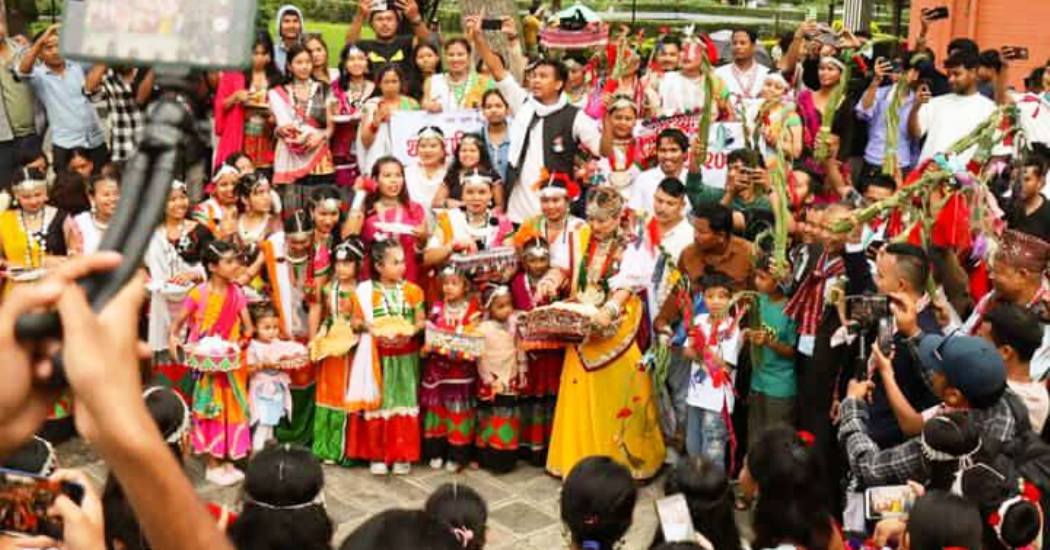
Gurahi Festival Celebrated by the Tharu Community in Kathmandu
The Tharu community has celebrated the Gurahi festival in Kathmandu. Known as a festival dedicated to children, members of the Tharu community gathered to mark the occasion together in the capital city.
According to Subodh Singh Tharu, Acting Chairperson of the Tharu Commission, Gurahi is primarily related to children. This year, children from the community came together at Bhrikutimandap to celebrate the event.
Cultural Belief Behind Gurahi Festival
He explained that Gurahi is rooted in a strong belief system. The festival is observed to prevent children from being affected by diseases or epidemics. He stated, “Gurahi holds its own traditional significance. In villages, people make cloth dolls and perform rituals at the village square before immersing them.”
Women bring these cloth-made Gurahi figures and throw them, while men strike them with sota (wooden sticks). After this symbolic act, people share offerings such as puffed rice or pulses, followed by dancing and singing together as part of the joyful celebration.
Regional Variation: Laga Panche in Morang
According to Commission Member Bholaram Chaudhary, Gurahi is one of the major festivals for the Tharu community. However, in Morang, Tharus celebrate the same festival under the name Laga Panche.
He mentioned, “Though the festival is the same, the customs and practices vary between Tharus of eastern and western regions. In Morang, it is celebrated on the same day as Nag Panchami, following similar rituals. However, as per Tharu tradition, two small ponds are created in the courtyard, and all the rituals are performed including offering milk.”
Multiple Meanings Behind the Term ‘Gurahi’
Minraj Chaudhary, a community leader and former Chairperson of the Guthi Sansthan, shared that Gurahi is also the name of an insect that feeds on pests like bhusuna (a type of grain beetle) and mosquitoes, which helps reduce the spread of epidemics.
He explained, “The term ‘Gurahi’ has multiple interpretations within the Tharu community. One meaning refers to a lifeless object made from pieces of cloth, while another meaning points to a living insect known for its sound.”
Similarly, the term Gurya is also polysemous. It can refer to a festival or a garland. However, in the context of the Gurahi festival, there is no exchange of garlands, nor is there any connection with the edible insect. The Gurahi festival is believed to be symbolically associated with the insect that emits a distinct sound.
A Unique Cultural Identity and Symbol of Protection
Gurahi is not merely a festival—it reflects the cultural beliefs, protective rituals, and regional diversity of the Tharu community. Whether celebrated as Gurahi in the west or Laga Panche in the east, it highlights the community’s unique way of safeguarding health and expressing collective identity through symbolic acts and communal joy.


